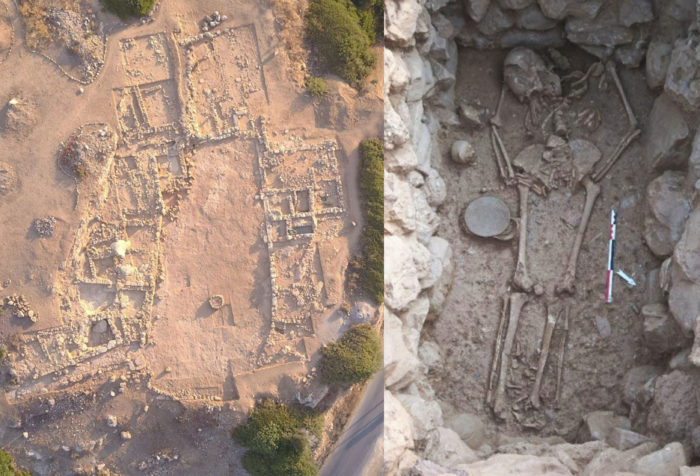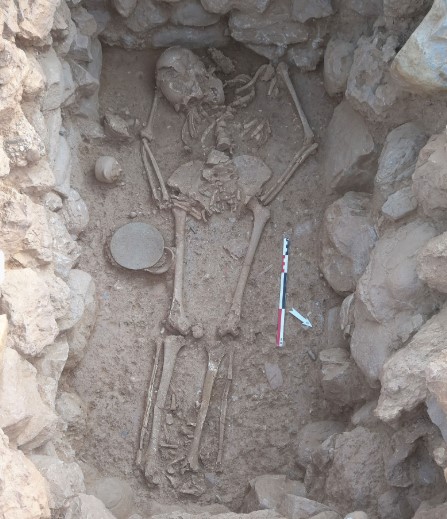An intact skeleton of a woman lying next to a stunning necklace and other important artifacts from the Early Minoan era (circa 2,600 BC), were unearthed recently at the archaeological site of Sisi on Crete.

Sisi, located in the prefecture of Lasithi, represents one of the most important Bronze Age excavations in Crete during the past decade, because of its extent, chronological range, and the type of buildings uncovered.
The site sits on the coastal hill of Kephali of Agios Antonios, locally known as Buffo. Its strategic position attracted the attention of early settlers and from its initial foundation around 2600 BC, it remained occupied till the end of the Bronze Age, around 1200 BC.A mirror and neckless found next to the skeleton in CreteA box-shaped grave belonging to the Post-Minoan era containing an almost intact skeleton of a woman was found.
A copper mirror with an ivory handle, dress pins made of copper and a necklace with 15 olive-shaped golden beads and fifteen smaller golden beads were also found inside the woman’s grave. These types of graves are rare on Crete and are usually only found in Knossos and Chania.Further excavations have revealed a decorated floor, constructed with a high-quality mortar, and a well-made 33-meter (109-foot) long clay drainage pipe, the ministry said.
Significant finds from lesser-known eras have also been unearthed in other parts of the hill, among them a residence that was destroyed in the Mid-Minoan Era.

“This building became the heart of the later west wing. Even though it was destroyed by a fire in 2,500 BC, its remains were almost fully incorporated into the construction of a complex of monumental buildings with a courtyard, which was constructed around 1,700 BC,” the statement noted.
Sissi like so many other Minoan settlements and palace centers was destroyed by fire and the nature of occupation drastically changes. The ruins of one or more Neopalatial houses were partly incorporated and overbuilt by a new type of structure that betrays influences of the Mycenaean Mainland.
Late in the 13th c. BC the site was suddenly abandoned. Fortunately, apart from metal, all other objects were left in place, allowing a proper reconstruction of its internal functioning.
The Kephali hill at Sisi would, in the centuries to follow, become a place of memory and gradually disappear from history.The Sisi Archaeological Project started excavating the site in 2007 by a team of the University of Louvain under the auspices of the Belgian School at Athens.